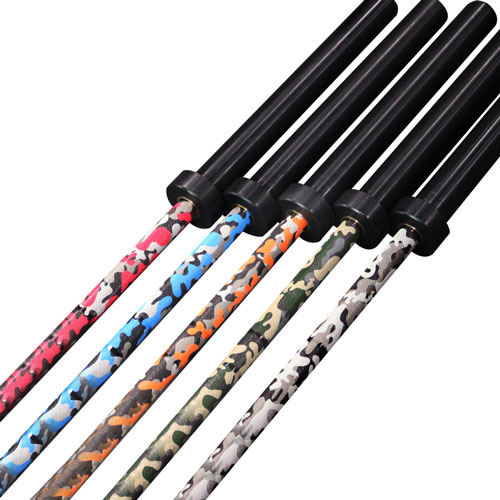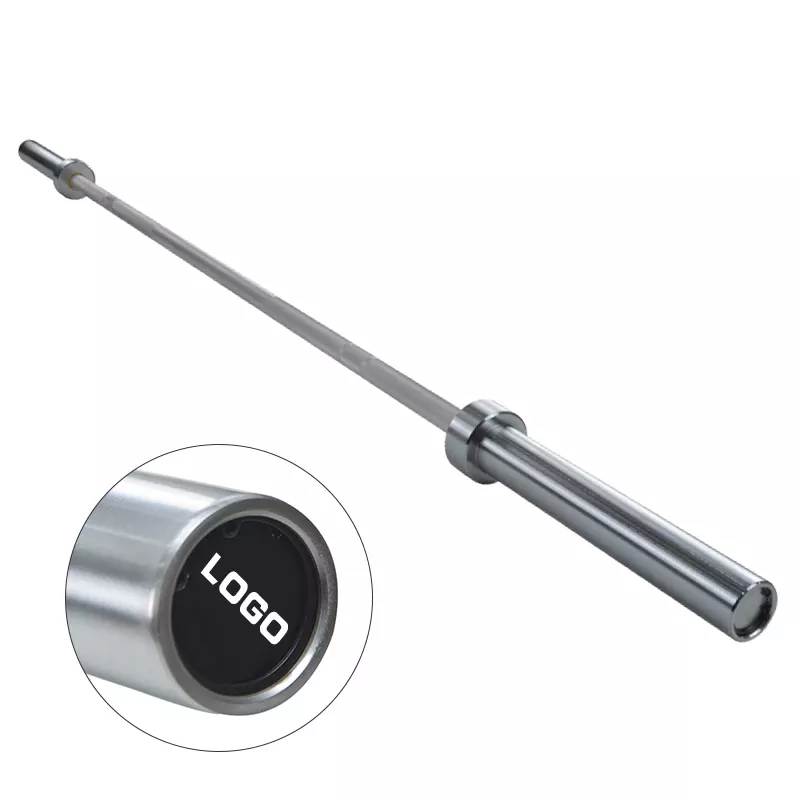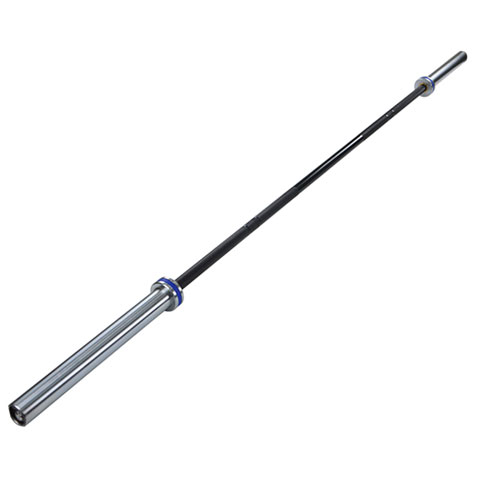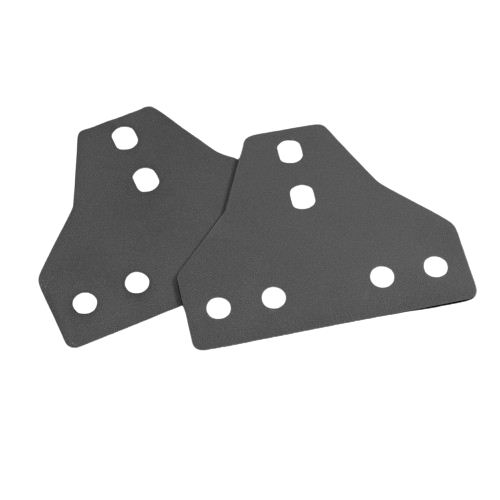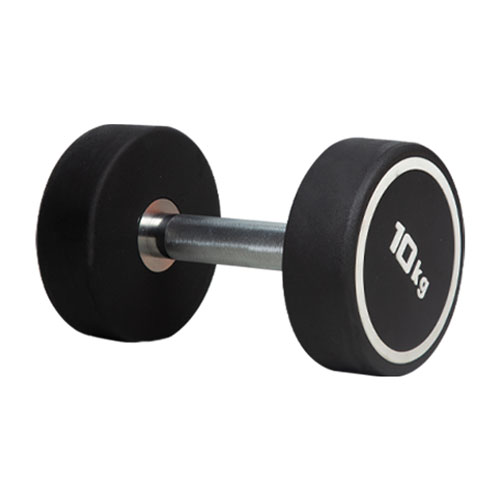Inside the Barbell Factory: Crafting Strength from Steel

Every barbell starts with a piece of steel—a simple yet powerful material that will transform into the cornerstone of your workout. It's fascinating to think that something as humble as steel can carry the weight of your fitness goals. But it’s not just any steel; the metal that becomes your barbell is carefully selected for strength, durability, and resilience. The journey from raw material to finished product is a testament to precision and craftsmanship. The role of precision in creating fitness equipment cannot be overstated. Each step in the process must adhere to strict standards to ensure that the final product can endure years of intense workouts without faltering. From the initial forging to the final coat of finish, the creation of a barbell is a marriage of art and engineering, where the smallest miscalculation can make all the difference.
Step 1: Sourcing the Raw Materials
The journey begins with sourcing steel from reputable suppliers—steel that will form the very backbone of your fitness equipment. The quality of steel used in barbell manufacturing is crucial to its ultimate performance. Steel, derived from iron ore, is refined through complex processes to remove impurities and increase its strength. Not all steel is created equal, and only the finest grades are selected for the barbell production process. Higher-quality steel ensures the barbell will be durable, able to withstand the heavy loads of weightlifting, and provide a smooth, reliable experience for users. The steel used must be tough enough to resist bending, cracking, or warping under pressure, yet flexible enough to allow the barbell to endure the repeated strain of heavy lifting.
Step 2: The Art of Barbell Forging
Once the raw steel is obtained, the next step is the art of forging. This is where the steel is transformed from a cold, rigid metal into something functional and fit for purpose. Forging involves heating the steel to an incredibly high temperature, making it malleable enough to shape into the desired form. It’s a delicate balance—too much heat, and the steel becomes brittle; too little, and the forging process becomes impossible. The forging process is an essential step in crafting strength, as the heat and pressure applied during this stage ensure the metal's grain structure is optimized for strength. Through a combination of intense pressure and high heat, the steel is hammered and shaped into the rough outline of a barbell. It’s during this phase that the barbell begins to show its true potential, gaining its essential strength and reliability.

step 3(Custom Barbell)
Step 3: Designing the Perfect Barbell
A well-designed barbell isn’t just about looks—it’s about function, balance, and performance. Key features of a high-quality barbell include the weight distribution, the grip design, and the overall balance. A good barbell should feel secure in the hands and provide a firm grip without causing discomfort. The sleeves need to rotate smoothly, allowing for optimal movement during lifts. Additionally, the knurling (the textured surface on the barbell) is critical in providing a non-slip grip during exercises like deadlifts or squats. But the design isn’t just standardized. Customization plays a big role in barbell factories, where manufacturers can tailor products for different types of lifts, athletes, and even gyms. Whether it’s a specific weight, material, or grip pattern, barbell factories can customize the product to suit the precise needs of the customer, making each piece truly one-of-a-kind.
Step 4: The Manufacturing Process: From Mold to Form
Once the steel is forged and designed, it’s time for molding and pressing. The use of molds and presses ensures that each barbell is consistently shaped to the highest standards. The molds are precision-engineered to ensure that every barbell that comes out is the right size, weight, and shape. After the steel is placed into the molds, it’s subjected to high-pressure presses, which finalize its form. During this phase, the barbell is closely monitored, and fine-tuning is necessary to ensure it maintains its integrity. Adjustments to the mold might be required to guarantee the right balance, ensuring that every inch of the barbell meets the exact specifications. This meticulous process results in a smooth, uniform product ready for the next stage of production.

step 5(Quality Control)
Step 5: Quality Control: Ensuring Durability and Strength
The barbell’s journey doesn’t end with shaping; it moves into a rigorous quality control process. Here, every barbell undergoes a series of tests to ensure it meets the highest standards of durability and strength. The testing process involves subjecting the barbell to extreme conditions, such as heavy loads and forceful movements. Testing for strength ensures the barbell can handle the stress of intense workouts without warping or cracking. Balancing tests check for symmetry and uniformity, making sure that the barbell remains stable during use. These tests are crucial to guaranteeing the longevity and safety of the product. Any barbell that fails to meet these high standards is immediately discarded or sent back for rework, ensuring that only the best products make it to market.
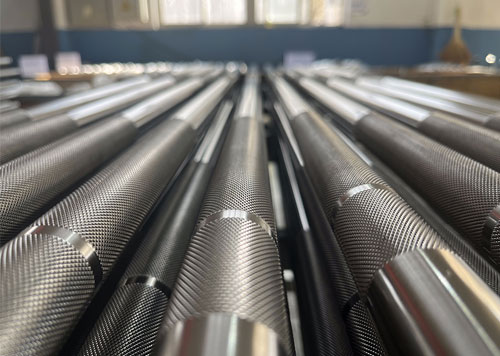
step6(Finished Product)
Step 6: Adding the Finishing Touches
Once a barbell passes the strict quality control tests, it’s time for the finishing touches. Coating and finishing are essential steps in protecting the steel and ensuring the barbell's longevity. The application of a protective coating prevents rust and corrosion, particularly for bars that will be exposed to sweat and moisture in gyms. Various coating options—such as chrome, zinc, or powder coating—provide different levels of durability and aesthetic appeal. But it’s not just about protection; it’s about performance, too. The grips, knurling, and sleeves are all designed to enhance the user's experience. The knurling provides a secure grip for lifting, while the sleeves are designed for easy loading and unloading of weights. Together, these finishing details contribute to a barbell that performs as well as it looks.
Step 7: Packaging and Shipping: Ready for the Gym
The final step in the barbell’s journey is packaging and shipping. From the factory floor to the gym or home gym, the barbell is carefully packed to ensure it arrives in perfect condition. Barbells are heavy, and transporting them requires special care to prevent any damage. Packaging is designed not only to protect the product but to make the delivery process as efficient as possible. Once packed securely, the barbells are shipped to their final destination, ready to become part of someone’s fitness journey. Whether it’s a professional gym or a personal training space, the barbell will soon be put to work, aiding individuals in building strength, muscle, and endurance.
Step 8: Innovation in Barbell Production
Barbell manufacturing is an ever-evolving field, with new trends and technologies constantly pushing the boundaries of what’s possible. Innovations like precision manufacturing, the use of advanced materials, and automated production processes are making it easier to produce high-quality barbells at a faster rate. Many factories are now experimenting with materials like titanium and carbon fiber, which offer a lighter but stronger alternative to traditional steel. Additionally, the focus on sustainability is growing, with manufacturers incorporating eco-friendly practices into their production lines. Recycled materials, energy-efficient processes, and reduced waste are all part of the effort to make barbell production more sustainable.
Conclusion: The Making of Strength
From raw steel to a finely crafted barbell, the process of creating strength is a journey that involves skill, precision, and passion. Barbell factories play a crucial role in building better workouts by producing equipment that not only meets but exceeds the expectations of fitness enthusiasts around the world. Understanding the intricate process that goes into making a barbell gives us a deeper appreciation for the tools that help us reach our fitness goals. The next time you grip a barbell, remember that it’s not just a piece of equipment—it’s a masterpiece of engineering designed to support your strength and your journey toward becoming the best version of yourself.
Refer to Factory >> Barbell Factory
FAQ about Inside the Barbell Factory: Crafting Strength from Steel
Q1: What type of steel is used to make barbells?
A1: The steel used in barbell manufacturing is of the highest quality, ensuring durability and strength. It typically comes from iron ore and undergoes a refining process to eliminate impurities, making it strong enough to handle heavy loads during workouts.
Q2: How is a barbell forged?
A2: The forging process involves heating steel to high temperatures to make it malleable, then applying pressure to shape it into a barbell. This process helps optimize the metal's structure, enhancing its strength and resilience.
Q3: Can barbells be customized for specific needs?
A3: Yes, barbell factories offer customization options to cater to different fitness needs. This includes adjusting the barbell's weight, handle design, and knurling pattern to suit particular lifting styles or personal preferences.
Q4: What quality control measures are taken during barbell production?
A4: Barbells undergo rigorous quality control testing to ensure they meet strength, balance, and precision standards. This includes stress tests, balance checks, and durability evaluations to guarantee that the final product is safe and reliable for use in any workout setting.
Q5: How are barbells packaged for shipping?
A5: Barbells are carefully packaged to prevent any damage during transit. They are wrapped securely and protected with padding to ensure they arrive safely at their destination, whether it's a home gym or a commercial fitness facility.
Q6: What innovations are being made in barbell manufacturing?
A6: Barbell manufacturing is evolving with advancements in materials, such as titanium and carbon fiber, which offer lighter yet stronger alternatives to traditional steel. Additionally, sustainable practices, like using recycled materials and energy-efficient production methods, are becoming increasingly popular in the industry.

